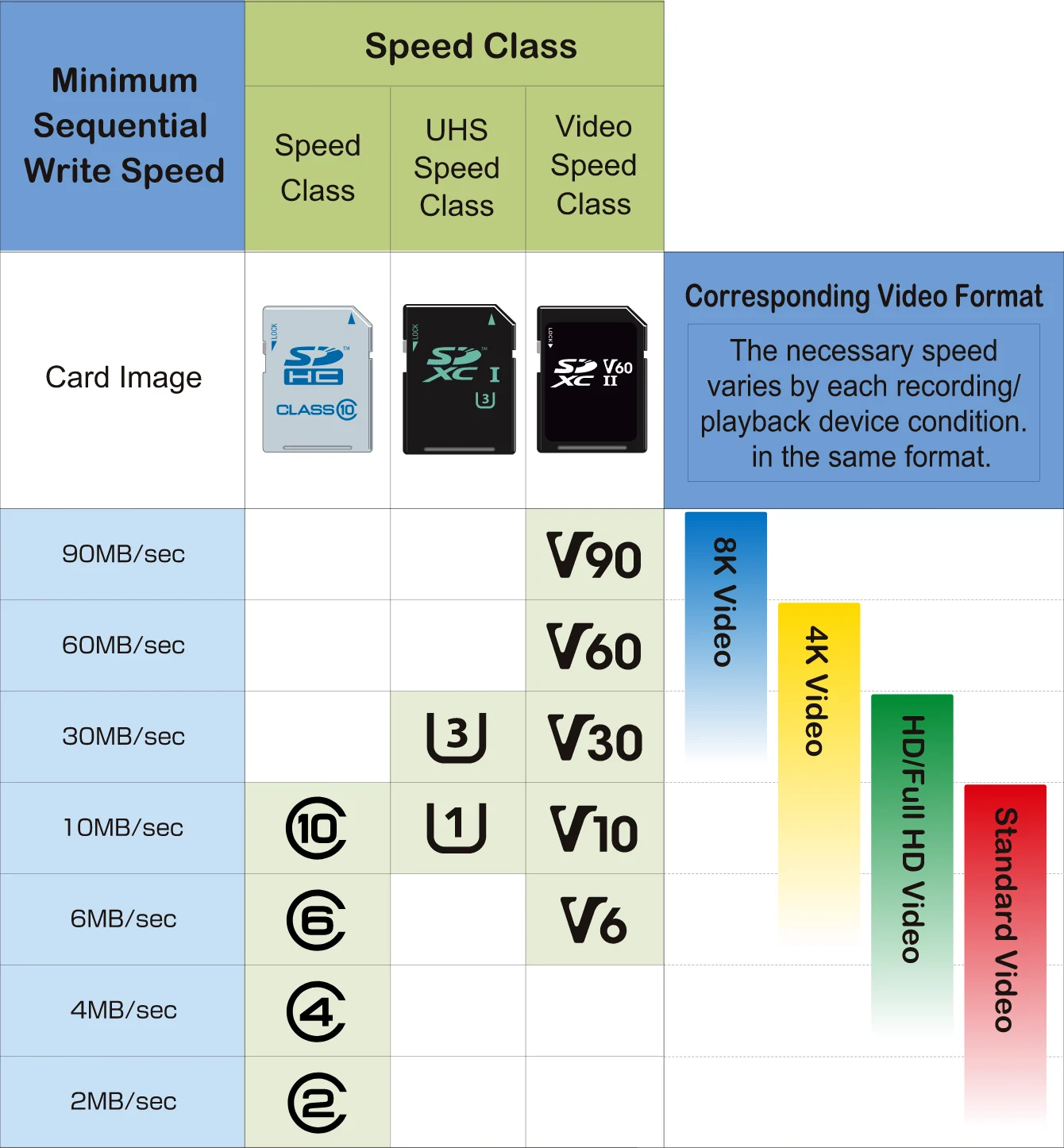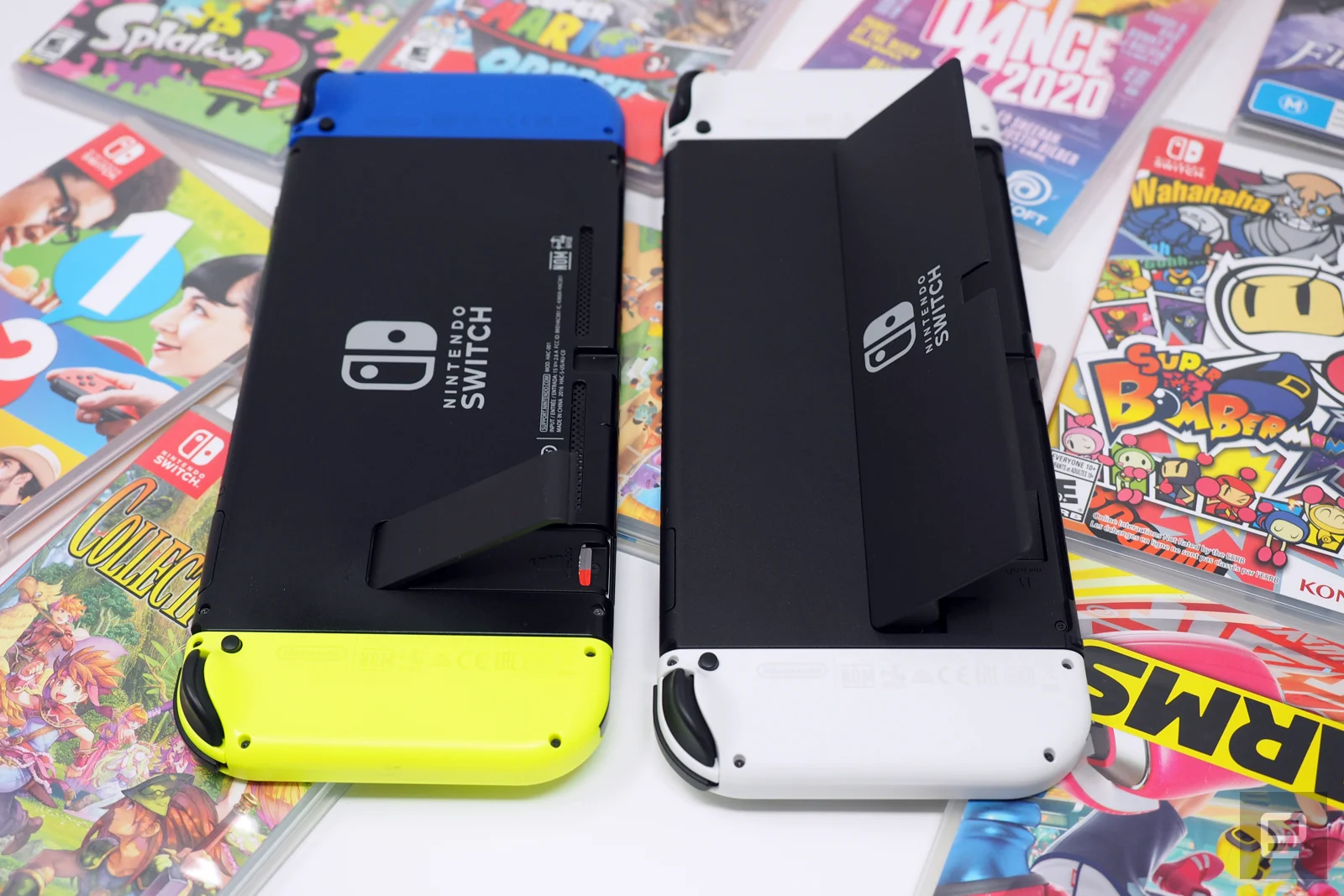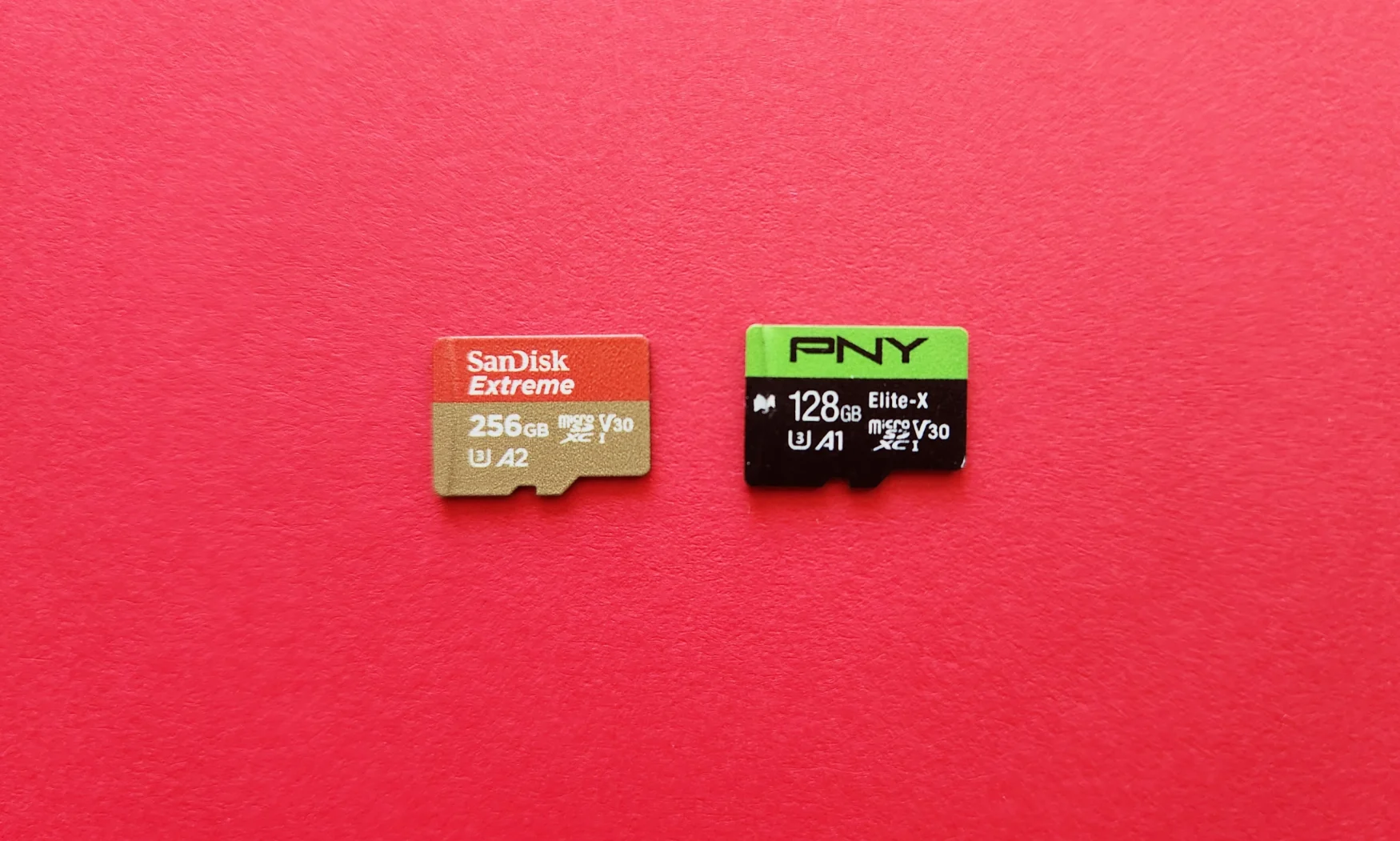If you want to add storage space to a Nintendo Switch, GoPro or Raspberry Pi, you need a microSD card. But while several cards will be fast enough for most use cases, some inexpensive options will perform better than others. To help you find a reliable storage booster, we recently put a dozen microSD cards through a range of benchmark tests.
What to look for in a microSD card
Capacity
The first thing to figure out when buying a microSD card is how much space you need. Modern cards are usually available in sizes ranging from 32GB to 512GB, while a handful offer 1TB models as well. 2TB cards are theoretically possible but still in the prototype stage.
For most, a 128GB or 256GB model should be the sweet spot between price and capacity. But if you need more room – say, for stashing a bunch of games on a Steam Deck – a 512GB card could make more sense and often provides a better cost-per-GB ratio. These days, you can find a decent 128GB card for around $15 or less, a decent 256GB card for less than $30 and (with sales) a decent 512GB card could be as little as $40 (though most cost closer to $50 or $60). There’s a starker increase when you go up to 1TB cards, which typically cost around $100.
Note that a microSD card’s performance may differ depending on what capacity you buy. SanDisk says its 128GB Extreme card delivers sequential write speeds up to 90 MB/s, for example, while the higher-capacity models in the same line offer up to 130 MB/s.
When we talk about microSD cards today, we usually refer to cards that use the microSDXC (eXtended Capacity) standard, which have a capacity between 32GB and 2TB. Your device needs to support this for it to work with a microSDXC card. This will almost never be an issue these days, but some older devices (a Nintendo 3DS for instance) are only compatible with microSDHC (High Capacity) cards, which range from 2GB to 32GB.
Read and write speeds
MicroSD cards are primarily judged on their read and write speeds, which are usually measured in megabytes per second (MB/s). Generally speaking, most microSD cards have faster read speeds than write speeds. These metrics can then be broken down into sequential and random performance. Sequential read and write speeds matter when you’re trying to access or save long, constant streams of data, such as opening a large video or copying a big batch of files from a PC. If you want to use a microSD card for media storage, this is particularly important.
Random performance, meanwhile, is about how quickly a card can read and write small files scattered throughout the device. Since random read/write speeds are much lower than sequential ones, storage device makers tend not to advertise them as loudly. But they’re important if you use a card with a gaming device or a single-board computer like the Raspberry Pi, where it often has to rapidly save and access small bits of data in random locations.

SD Association
Speed ratings
If you look at a microSD card, you’ll see a buffet of numbers, letters and symbols. Most of these refer to the card’s speed class and performance ratings, which are determined by the SD Association.
A card’s Video Speed Class, or V-rating, details its minimum sequential write speed, which is especially important when recording video from a camera. It ranges from V6 to V90. Most of the cards we tested had a V30 rating, so they have a sequential write speed of at least 30 MB/s. This should be enough to support up to 4K video at lower bitrates. Higher-rated V60 and V90 cards are usually better for capturing 8K, but they come at a much higher cost.
The UHS Speed Class, or U-rating, also refers to a card’s minimum sequential write speed. It comes in two varieties: U3, which mandates a minimum of 30 MB/s, and U1, which is rated for 10 MB/s.
The older Speed Class rating overlaps with the other two systems. It’s signified by a C symbol and goes from Class 2 to Class 10, with the number (again) indicating minimum sequential write speed. This rating is less relevant nowadays, but you may still see a “C10” logo on some cards.
The Application Performance spec, marked by an A symbol, is an indicator of random read/write speeds. This is measured in IOPS, or input/output operations per second, rather than MB/s. There are two categories here: A1 cards offer a minimum random read speed of 1,500 IOPS and a minimum random write speed of 500 IOPS, while A2 cards bump those up to 4,000 IOPS and 2,000 IOPS, respectively. Both ratings also guarantee sequential write speeds of at least 10 MB/s.
Most people should look for a card with V30, U3 and A2 ratings. It’s totally possible to get a solid card without those: A U1 card might be worth it if you just need a cheap option with a high capacity to hold files, for example. V60 and V90 cards are worth a look if you’re serious about shooting high-resolution photos and video as well. But generally speaking, cards with the certifications above should provide the best blend of price and performance today.
It’s important to emphasize that these ratings are baselines. Many V30 cards offer significantly higher write speeds than 30 MB/s, for instance, and some A1 cards can outperform some A2 models in practice. The speeds advertised by manufacturers aren’t always 100 percent accurate, either: Sometimes the card will be slower in real-world use, other times it may actually be a bit faster.
UHS bus speeds
The other spec to note is the card’s bus interface. Most microSD cards available today are UHS-I, which have a theoretical maximum speed of 104 MB/s. There are also UHS-II cards, which have an extra row of pins on the back and can reach up to 312 MB/s. (A newer UHS-III standard exists as well but hasn’t seen wide adoption just yet.) These are labeled on the card with a Roman numeral I or II.
The absolute fastest microSD cards right now are UHS-II cards, and they’re usually the ones with V60 or V90 ratings. If you shoot lots of 4K to 8K video or frequently use burst mode to capture ultra high-res photos, the performance gains of a good UHS-II card can save you time.
But these are much more expensive than UHS-I cards: This 128GB model from ProGrade Digital, for example, is a relative bargain at $55. You need a device that’s compatible with the UHS-II interface to see any benefits, too, and as we were putting this guide together, stock for UHS-II cards was spotty. For now, the higher speeds aren’t worth the price premium for the vast majority of people, so we mostly stuck to UHS-I options.

Kris Naudus / Engadget
A note on card readers, the Nintendo Switch and Steam Deck
While the UHS-I spec has a theoretical maximum of 104 MB/s, some UHS-I cards can exceed that speed through proprietary extensions. You need a compatible card reader and host device to take advantage of that extra performance, though. If you find a UHS-I card advertising speeds higher than 104 MB/s, this is what’s going on. You can see these limits in action with a Nintendo Switch or Steam Deck: Both of those gaming devices support the UHS-I interface and don’t go beyond its official speed, flattening any sequential gains some cards may have elsewhere. The broader takeaway: Your microSD card will only be as fast as the slowest link in your chain.
Warranty
Many microSD cards are designed to be durable, with protection from water, extreme temperatures, X-rays and drops. Still, in case of catastrophe, a long warranty is always good to have. Many manufacturers offer lifetime limited warranties, though we’ve noticed that “endurance” cards marketed to withstand more hours of writing are usually covered for a much shorter period of time.
Avoiding counterfeits
The memory card market has had a particular problem with scammers selling fake products. To guard against this, only buy from a known brand and a reputable retailer such as Best Buy, B&H Photo or Adorama. If you shop at Amazon, only buy if the shipper and seller is Amazon.com. (Though a handful of users have reported receiving counterfeits even from Amazon directly in the past.) Remember: If a price seems too good to be true, it probably is. Be wary of any retailer offering significantly a lower price than others.
Once you receive a card, check its packaging for any irregularities. You can run benchmark tests like CrystalDiskMark or BlackMagic Disk Speed Test to verify its speeds aren’t drastically lower than what’s advertised (or possible, given its specs). You can also use software that’s designed to verify the true capacity and performance of your card, such as H2testw and FakeFlashTest.
How we tested
We put 12 microSD cards through a series of tests to verify their sequential and random performance. These included benchmarks like CrystalDiskMark, BlackMagic Disk Speed Test, ATTO Disk Benchmark and AJA System Test, as well as a few “real-world” tests. We copied and pasted a small folder of photos about 1.15GB in size to and from each card, then did the same with a larger 12.2GB folder containing multiple file types and subfolders, timing the process each time. We also checked how each card performed on the Steam Deck, downloading games of varying sizes – including Stardew Valley, Aperture Desk Job, Metal Gear Rising: Revengeance and Apex Legends – then timing how long it took to launch each game and load save files.
We used a Kingston USB 3.2 UHS-II reader to test each card on both Windows 11 and macOS Ventura. For the former, we used an Alienware gaming PC with an Intel Core i9-10900F, Nvidia GeForce RTX 3080 GPU, 32GB of RAM and a 1TB SSD. For the latter, we used a 2021 16-inch MacBook Pro with an Apple M1 Pro chip, 16GB of RAM and a 512GB SSD. To use our card reader on the MacBook, we used Apple’s USB-C Digital AV Multiport Adapter.
We tested the 128GB version of each card wherever possible, though for a couple of cards – the SanDisk Extreme and Samsung Pro Plus – we were only able to test their 256GB models. We also reformatted each card before testing with the SD Association’s Memory Card Formatter tool.
Best for most: Samsung Pro Plus
The Samsung Pro Plus offered just about the best sequential write performance of the cards we tested (around 130 MB/s in CrystalDiskMark) and topped them all in terms of random read/write speeds, so it should work well whether you’re buying for a camera, tablet or gaming handheld. Unsurprisingly, it has all the requisite ratings: U3, V30 and A2. Its sequential read performance isn’t quite as quick as some of our alternate picks below, but it’s not far behind. In our large file transfer test, for instance, it was only four seconds off the fastest models.
The Pro Plus costs $19 for 128GB, $30 for 256GB and $60 for 512GB, so it’s not the cheapest option available, but it’s still affordable. Samsung also sells the card with a USB reader that’ll help it reach its maximum speeds. Either way, it comes with a 10-year limited warranty.
If you opt to buy the Pro Plus, make sure you get the latest-generation model, which Samsung launched in April 2023. At the moment, the company is still selling the prior iteration of the Pro Plus, which looks identical but isn’t as quick, especially when it comes to random read/write speeds. (Look for the model with sequential read speeds rated at 180 MB/s and sequential write speeds rated at 130 MB/s.) We tested the 256GB version of the Pro Plus due to stock issues with the 128GB model, but this shouldn’t have a major impact on real-world performance, as Samsung rates both cards identically.
Runner up: Kingston Canvas Go Plus
If the Samsung Pro Plus is unavailable or you just want to save a few bucks, the Kingston Canvas Go Plus is a strong alternative. It delivered the highest sequential read speeds of any card we tested across CrystalDiskMark, ATTO and the BlackMagic Disk Speed Test, just edging out SanDisk’s Extreme and Nintendo Switch-branded cards. It effectively tied with those two cards in our large file transfer test. Its sequential write speeds (just over 100 MB/s on CrystalDiskMark) are where it lags behind the Pro Plus, but they should still be quick enough for many uses. Its random read/write speeds were only bested by Samsung’s card, too, so it’s still a good option for apps and games.
This is a U3-, V30- and A2-rated card backed by a lifetime limited warranty. At $17 for 128GB and usually less than $30 for 256GB, it’s slightly cheaper than the Pro Plus and about as affordable as most cards with this level of performance. A 512GB model is available too, though, it’s often priced in the high $60 to $70 range. At that point, you should get one of our alternate picks if they’re cheaper.
Best value: Samsung Evo Select
The Samsung Evo Select is a step behind our top picks, particularly when it comes to sequential write speeds (just under 70 MB/s on CrystalDiskMark), so it’s not an ideal pick for a camera. Still, it’s perfectly usable for many needs, and it’s regularly available for cheap at both Amazon and Samsung’s online store. In the past, we’ve seen its 128GB, 256GB and 512GB models fall as low as for $12, $18 and $40, respectively. All of those are about on par with the SanDisk Ultra, a frequently recommended cheapo card, despite the Evo Select having higher V30, U3 and A2 ratings.
The Evo Select’s sequential read speeds were just about in line with its advertised peak of 130 MB/s, which will be totally fine for many. Its random read/writes clearly trailed the Pro Plus and Canvas Go Plus, but were about on par with pricier cards like the SanDisk Extreme, Lexar Professional 1066x and SanDisk microSDXC for Nintendo Switch. Like the Pro Plus, it’s backed by a 10-year warranty. If you just want to save a few dollars on a chunk of extra storage, it’s a good value.
Another good option: SanDisk microSDXC Card for Nintendo Switch
The SanDisk microSDXC Card for Nintendo Switch is another worthwhile option if you see it available for less than the Pro Plus and Canvas Go Plus. Its sequential read speeds were about the same as the Kingston card in our benchmarks, but its sequential writes were slightly slower (and farther behind the Pro Plus). Its random read/writes were a step behind according to CrystalDiskMark, as well. The 128GB version of this card is usually priced a smidge higher than the Canvas Go Plus, but lately the 512GB version has gone for $10 or so less. SanDisk backs the card with a lifetime warranty, too. Note that we tested the Apex Legends version of the 128GB card. SanDisk also sells a Super Mario model, but we can’t speak to how that one performs.
Another good option: Lexar Professional 1066x
Similarly, the Lexar Professional 1066x is a decent alternative to the Pro Plus if you want to save a little cash. It’s another V30, U3 and A2 card, and like the Pro Plus, its sequential write speeds were a bit faster than the Canvas Go Plus and SanDisk Switch card in our benchmarks. Those write speeds weren’t as quick as Pro Plus, and its sequential reads trailed all three cards. Random read/writes also lagged behind the Pro Plus and Canvas Go Plus, and we noticed its speeds peak and dip more noticeably in our file transfer test. Still, it’s not slow.
The card’s 128GB and 256GB models are usually available for $17 and $22, respectively. The latter in particular might be a good bargain compared to the Pro Plus if you want better write speeds than the Kingston card can offer. The 1066x also comes with a lifetime limited warranty.
Other notable microSD cards

Photo by Jeff Dunn / Engadget
We didn’t use it ourselves, but if you’re willing to pay for a more powerful UHS-II card built for heavy-duty video recording, the Delkin Devices Power has tested well elsewhere and should deliver significantly faster sequential write speeds than our picks above. It’s one of the few UHS-II cards we could actually find in stock, but it costs a ton, starting at $55 for just 32GB.
The SanDisk Extreme effectively matched the Pro Plus in a few of our sequential write tests and delivered sequential reads about on par with the Canvas Go Plus, but that was partly due to us only being able to secure the card’s 256GB model, which is higher-rated than the 128GB version. Its random performance was well behind the Samsung and Kingston cards, too, and it typically costs more. In general, stock for the Extreme has been spottier at most retailers as late. If you see it on sale from a reputable seller, however, it’s another quality option.
The SanDisk Extreme Pro, meanwhile, is rated for even higher speeds (up to 200 MB/s sequential reads), but it also appears to be unavailable at most trusted retailers as of this writing.
The PNY Elite-X wasn’t far off the random read/write performance of the Pro Plus and Canvas Go Plus in CrystalDiskMark, and it often goes for cheap, but it was well behind in our sequential tests.
Credit: Source link


Comments are closed.